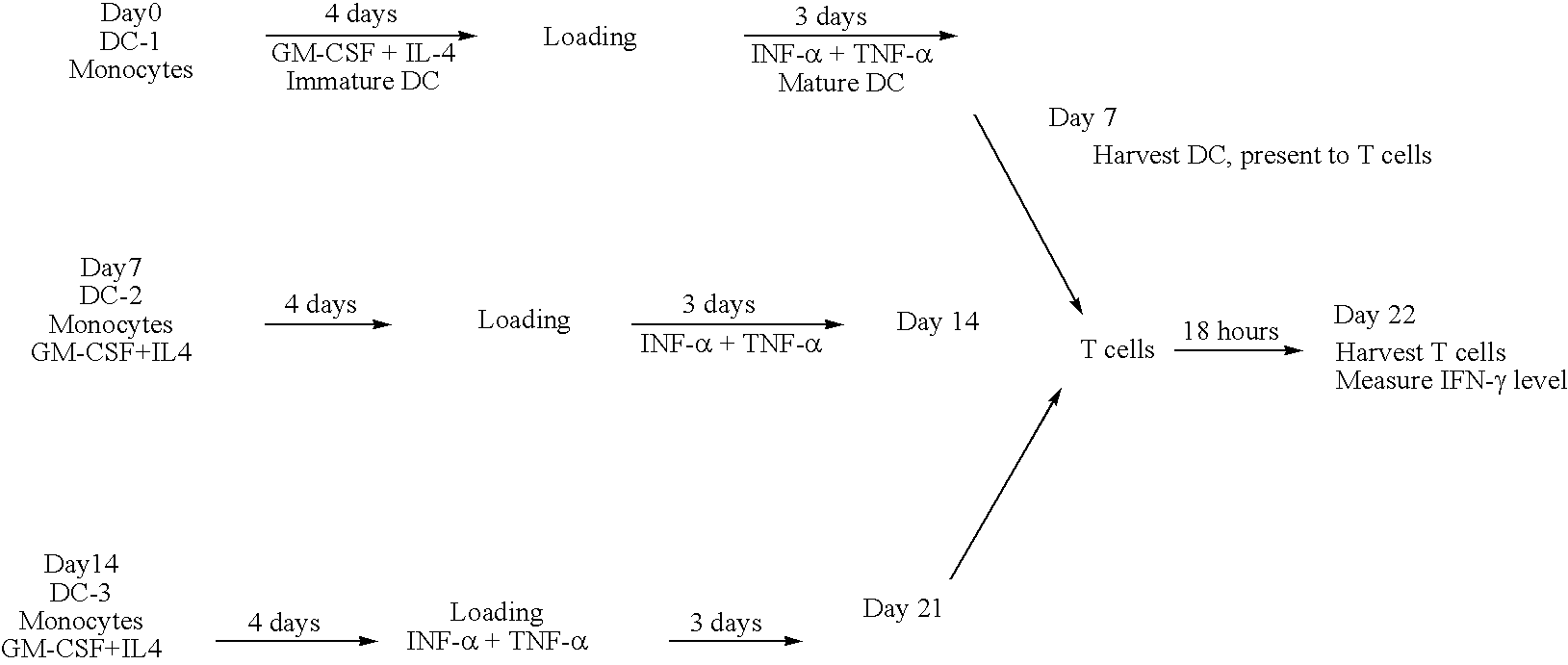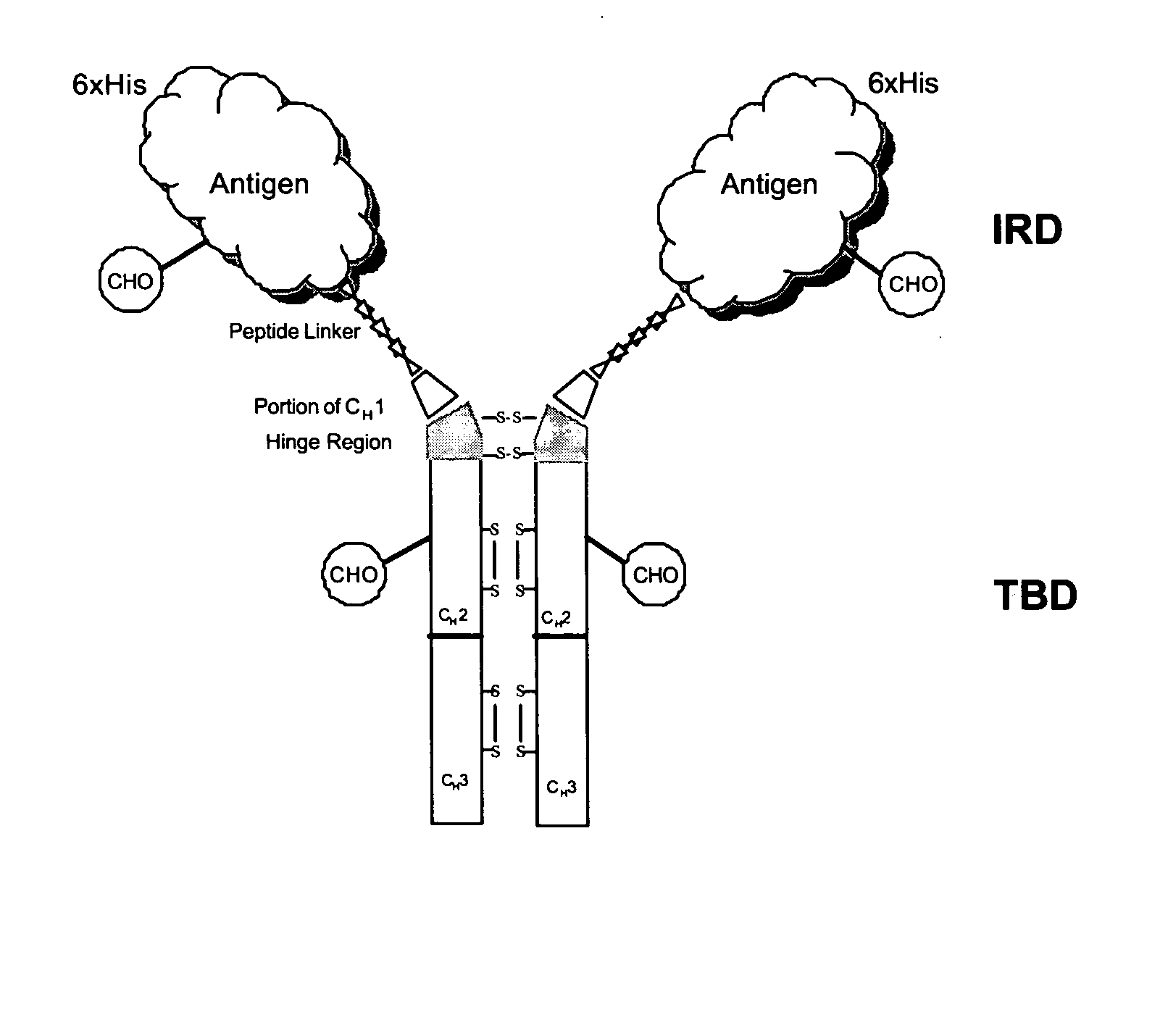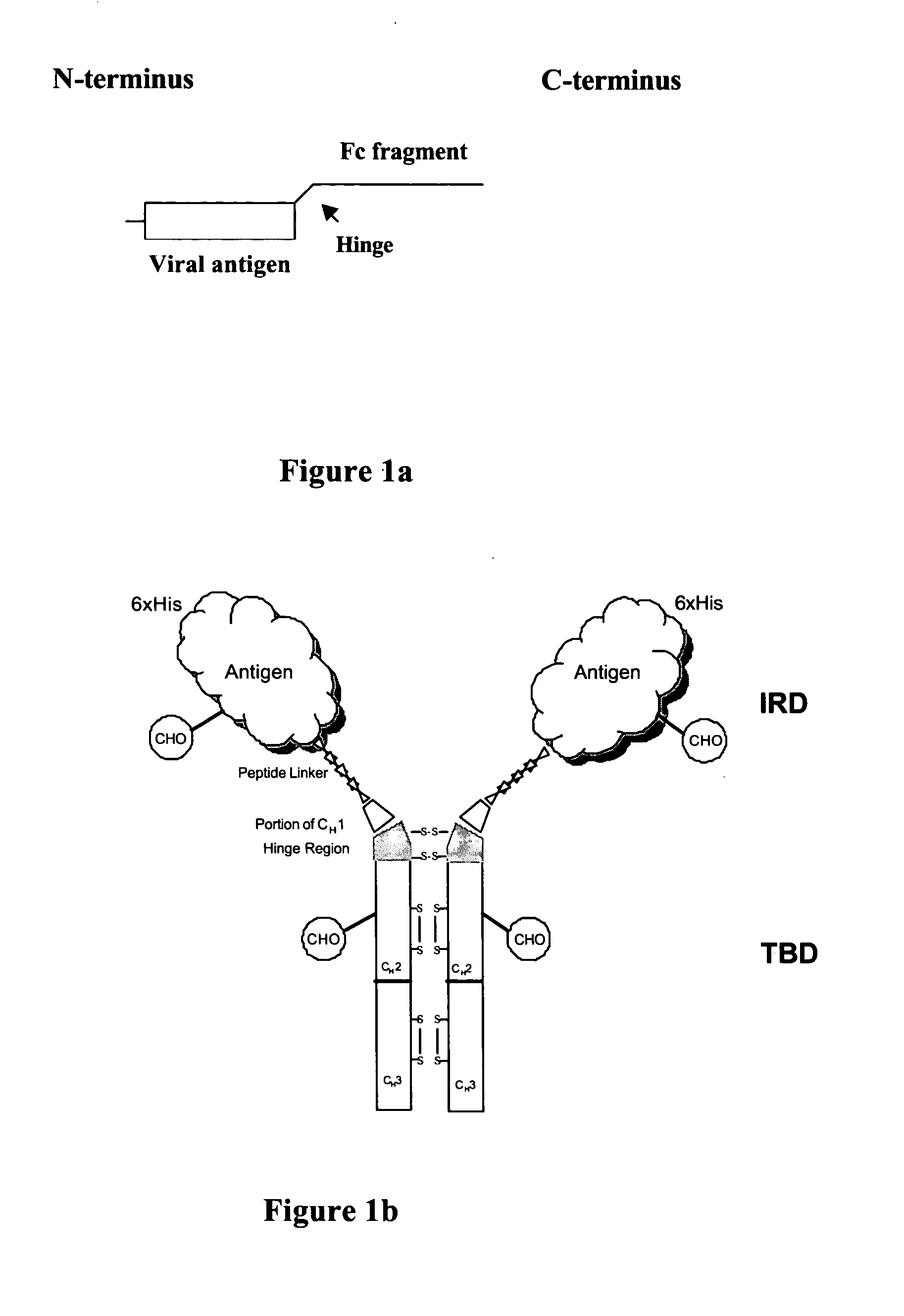Chimeric antigens for eliciting an immune response
a technology of eliciting an immune response and chimeric antigens, which is applied in the field of chimeric antigens, can solve the problems of ineffective eradication of established chronic infections, no prophylactic vaccine available at present, and only 20% of patients' effective effect of interferon therapy, and achieves the effect of efficient presentation of antigens and higher efficiency
- Summary
- Abstract
- Description
- Claims
- Application Information
AI Technical Summary
Benefits of technology
Problems solved by technology
Method used
Image
Examples
example 1
Construction of Murine TBD Protein Expression Vector
[0251] The mouse IgG1 DNA sequences encoding amino acids of a portion of CH1-Hinge-CH2-CH3 region was generated from mRNA isolated from the hybridoma (2C12), which produces mAb against HBV surface antigen (sAg). Total RNA was isolated from 2C12 using Trizol® reagent (Gibco BRL cat. No. 15596-026) and the DNA of the TBD was generated by RT-PCR using Superscript First-strand Synthesis (Invitrogen Cat. No. 11904-018). The PCR primers contained linker sequences encoding the linker peptide—SRPQGGGS—(SEQ ID NO: 28) at the 5′ terminus, a unique Not I site at the 5′ and a unique Hind III restriction site at the 3′ end. The resulting cDNA contains (5′ Not I)-linker sequence-CH1 (VDKKI)-CH2-CH3-(3′ Hind III). Following digestion with the respective enzymes, the fragment is ligated with pFastBac HTa expression vector plasmid (Invitrogen) using the same restriction enzyme sites. The 5′ primer used for PCR amplification was (Sense) 5′ TGTCATTC...
example 2
Construction of HBV Surface Antigen S1 / S2 and HIBV S1 / S2-TBD Fusion Protein Expression Vectors
[0257] The DNA encoding the HBV sAg fragment S1 / S2 was generated from the plasmid pRSetB HBV S1 / S2 template using PCR methodology. The primers used were: (sense) 5′ GGATCTGTACGACGATGACG (SEQ ID NO: 5) and the 3′ primer (antisense) 5′ AGTCATTCTGCGGCCGCGAGTTCGTCACAGGGTCCCCGG (SEQ ID NO: 6) containing the restriction enzyme site Not I. The 5′ end contained a unique Bam HI site derived from the parent plasmid that was used for ligations. Amplified DNA was digested with Bam HI / Not I and ligated with pFastBac HTa expression vector to generate the expression plasmid for HBV S1 / S2 protein. The fragment was ligated with the plasmid pFastBac HTa-TBD (described in example 1) following the digestion with the respective enzymes. This produced the expression plasmid pFastBac HTa HBV S1 / S2-TBD. This plasmid was used to produce recombinant baculovirus (described in example 1), which expressed the chimeric...
example 3
Construction of HBV Surface Antigen S1 / S2 / S and HBV S1 / S2 / S-TBD Fusion Protein Expression Vectors
[0258] The DNA encoding the HBV sAg fragment S1 / S2 / S was generated from the plasmid pAlt HBV 991 (University of Alberta) template using PCR methodology. The 5′ primer used for the PCR was (sense) 5′ GATAAGGATCCTATGGGAGGTTGGTCATCAAAAC (SEQ ID NO: 7), containing the restriction enzyme Bam HI site. The PCR primer for 3′ terminus was (antisense) 5′ GTCATACTGCGGCCGCGAAATGTATACCCAGAGACAAAAG (SEQ ID NO: 8), containing the restriction enzyme Not I site. Amplified DNA was digested with the respective enzymes and ligated with pFastBac HTa expression vector to generate either the expression plasmid for HBV S1 / S2 / S or the expression plasmid pFastBac HTa HBV S1 / S2 / S-TBD for the fusion protein (see FIGS. 10-11).
PUM
 Login to View More
Login to View More Abstract
Description
Claims
Application Information
 Login to View More
Login to View More - R&D
- Intellectual Property
- Life Sciences
- Materials
- Tech Scout
- Unparalleled Data Quality
- Higher Quality Content
- 60% Fewer Hallucinations
Browse by: Latest US Patents, China's latest patents, Technical Efficacy Thesaurus, Application Domain, Technology Topic, Popular Technical Reports.
© 2025 PatSnap. All rights reserved.Legal|Privacy policy|Modern Slavery Act Transparency Statement|Sitemap|About US| Contact US: help@patsnap.com



